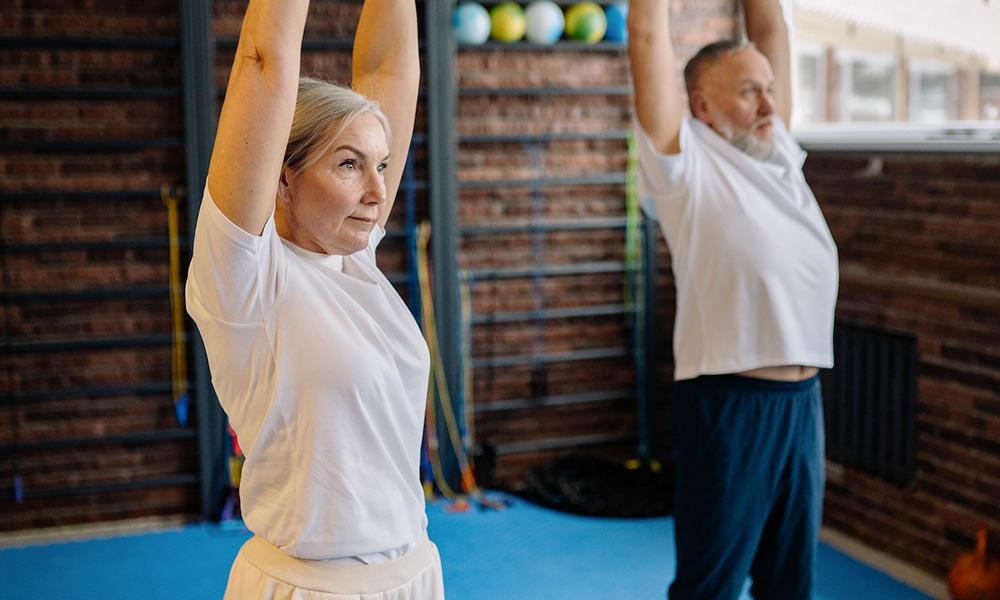Exercise is a celebration of what your body can do. It’s also a way to help it continue growing throughout your recovery process. So, how do you know how far to push yourself so that you can accomplish both? You want to improve, but the last thing you want is to overextend yourself and get less out of your workout, or worse, cause an injury. Here are a few signs to let you know that your body needs a modified version of an exercise and how to modify that exercise to fit your body’s needs.
When You Should Modify an Exercise
- You feel pain when doing the exercise. If you feel pain at any time during a movement, it’s crucial that you stop to notify your trainer. For those who are exercising without a trainer, stop the movement immediately, ensure that you’re doing that exercise correctly, and consider finding a modified version that doesn’t make you feel strained.
- You are testing the waters with a new movement. When you try an exercise for the first time, and you aren’t comfortable with it yet, it could be safer to start with a modified version of that exercise.
- The area you’re working on has been previously injured. As we mentioned previously, if a movement makes you unsure in any way, it’s best to start with a modified exercise. This is especially true if that area has been previously injured, as it’s more likely to cause another injury if you overextend yourself.
- Your trainer recommends modification. Your trainer may recommend that you modify the exercise at the beginning because they have a grasp on what your body can handle. Even if you feel like you can do more, try a modified version first, and work your way up.
How to Modify Your Exercises to Fit Your Body’s Needs
There are several ways to modify an exercise to prevent injury and to ensure that you get the most out of your movement. In addition to these tips, you can also try searching for reputable, trusted online sources that offer modified alternatives to your exercise.
Perform Modified Push-Ups to Increase Your Stability
Consider a modified push-up when thinking of added stability. There are two main options for modified push-ups: a wall push-up or push-ups on your knees. By placing your knees on the floor, you’ve added a stronger base to allow you to complete the movement with less tension. In other exercises, this may look like using two legs instead of one, widening your stance, sitting instead of standing, or using the wall to stabilize yourself.
Slow Down
You might feel pressure to move faster to keep up with everyone else or to finish your workout more quickly; however, it’s more important to ensure that you’re creating a strong foundation for the exercise and building from there. Moving slower allows you more time to think about how that exercise makes you feel, if you need further modifications, or if you’re doing the movement correctly.
Reduce the Weight
Reducing the weight during an exercise reduces the amount of tension. So, consider using a smaller weight or even using only your body weight when you’re starting out. Remember that form is the most important to prevent injury. Therefore, you should never sacrifice your form to take on more weight.
Give Yourself Time to Rest
If your body isn’t used to doing a particular exercise, it may need more time to recover. You might consider leaving yourself more time in between repetitions or before you move on to the next movement.
Reduce the Impact
Reducing the impact of an exercise allows you to be more gentle on your joints. If a movement includes jumping, for example, you may modify it without the jump or make the jump smaller.
Need Guidance in Exercise Modification?
In any workout routine, it’s vital that you always protect yourself first. Watch for cues from your body that it needs a break, communicate frequently with your trainer about how you’re feeling, and give yourself time for gradual improvements rather than running full steam ahead. You know your body best, and with these modification tips, you can change any workout to fit your body’s needs.
Survivor Fitness helps survivors regain their health and wellness through one-on-one personal training and nutritional support. We walk alongside you to provide you with the tools you need to get the most out of your recovery. Contact us today to learn more
